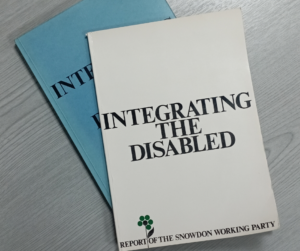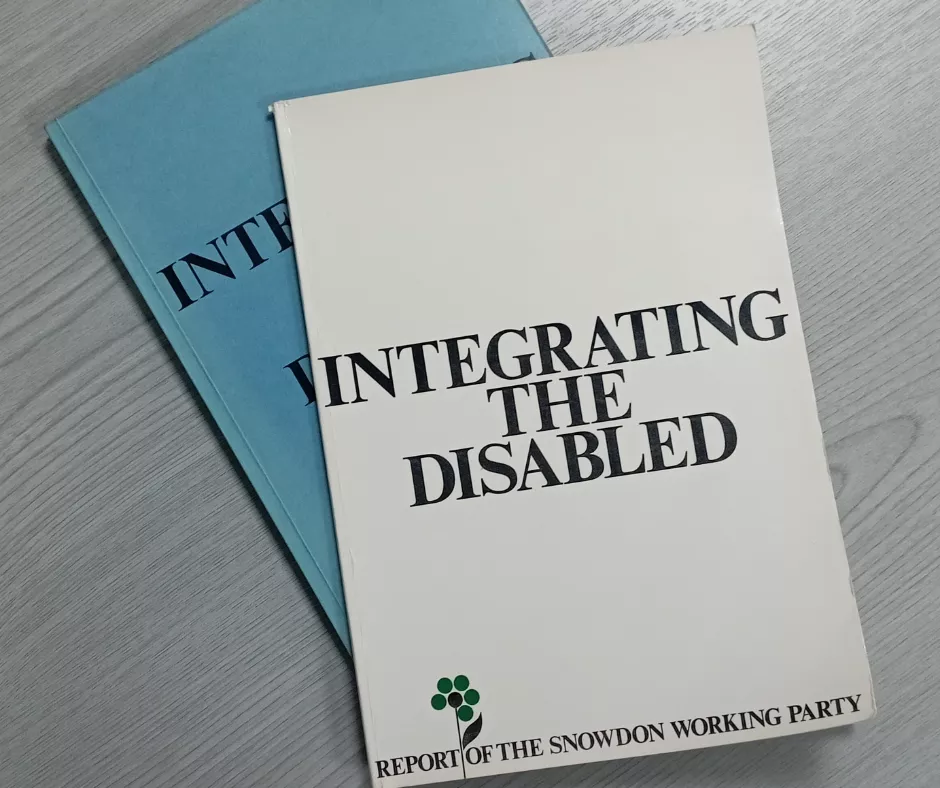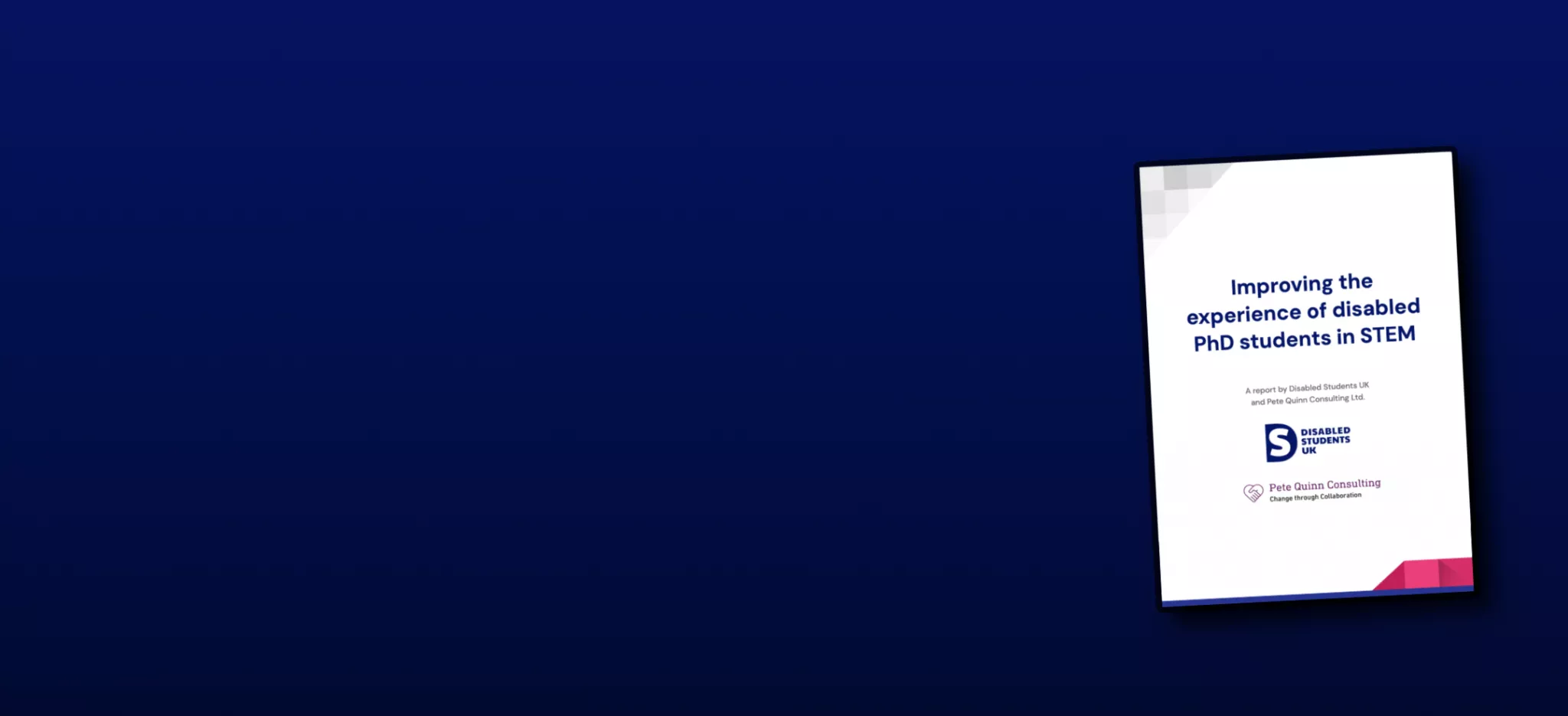The theme for this year’s UK Disability History Month is “Disability, Children and Youth”, which invites us all to assess the experience and treatment of disabled children and young people in the past to ensure better practices for the future.
49 years ago, Lord Snowdon was asked to chair a cross-party parliamentary working group on Integration of the Disabled. In 1976 they produced the report “Integrating the Disabled”, which led to Lord Snowdon founding the Snowdon Trust in 1981.
As a charity that works to improve the inclusion and accessibility of education for disabled students, we’ve been using this time to look back on our past. We re-read the report to see what progress has been made in disability inclusion in the last 50 years.
Aims of the report
The report aimed to examine reasons for the lack of integration of disabled people and to rectify these so a disabled person has equal opportunities as everyone else. Due to the huge extra costs attached to having a disability, this is still something we are working towards today. Although there have been some improvements in further and higher education (Disabled Students Allowance, for example), this is not enough for many students who have no other option than to turn to us to meet the gap, or miss out on the education they deserve. We’d hoped the situation was improving, but this year we received more grant applications than ever before, forcing us to turn away disabled students with nowhere else to go.

What we’re still fighting for
-
Sufficient support
The report refers to a “necessity, varying infinitely from case to case” of “sufficient support” in terms of finance and equipment. This was deemed necessary as long ago as 1976, yet we see everyday that this is still not universally provided. DSA is capped and is insufficient for some disabled students, while others are ineligible.
The report calls for “suitable accommodation and paid assistance to be provided”, and for buildings to be adapted to be completely accessible. We know from our students that too often this doesn’t happen, and when suitable accommodation and assistance is available, these often come at additional cost to the student.
Finally, it recommends “there should be someone in every institution of higher and further education with responsibility for co-ordinating services and facilities and providing necessary aids and equipment”. 5o years later, this is still the key recommendation coming out of every piece of research about improving the experience of disabled students, including the recent report from Disabled Students UK and the Disabled Students’ Commission.
-
Representation in positions of power
The report also makes the point that in 1976 disabled people were underrepresented in positions where decisions are made about them, including government and local authority departments. With the growing disability activism movement and the slogan “Nothing about us without us”, there have been definite improvements in disability representation. However, there is still a disproportionate number of disabled people in leadership roles and positions of power. It’s why we set up the Snowdon Master’s Scholarship and the Disabled Leader’s Network, so that we can champion future disabled leaders.
-
Consistent support
The “Integrating the Disabled” report called for “fundamental methodical reforms to rectify the anomalous structure of disablement benefits” in which two people with the same disability and needs may end up with widely differing financial support. This situation is hugely familiar to us today.
Our students often speak of a “postcode lottery” where the support they receive is often greatly dependent on factors out of their control. When they get to university, it’s not always obvious where to turn and who should be responsible for what, with disability support services under-funded and under-resourced. Every time, the burden of untangling this confusion falls on the student.
-
Accessibility and opportunity
It’s undeniable that higher education is much more accessible to disabled students now than it was 50 years ago – the “Integrating the Disabled” report stated only 1% of disabled school leavers went on to higher education, while in 2021 a quarter of disabled people had a degree or equivalent. But even today, that falls far short of the 42.7% of non-disabled people with a degree or equivalent. In employment this gap widens further, with just 53.5% of disabled people in employment compared with 81.6% of non-disabled people.
Closing thoughts
It’s been interesting for us to look back on where we started and see the progress made in the last 50 years, but it’s startling to see how much further we have to go. The students we speak to every day are still facing huge gaps in the support they’re entitled to.
While we continue on the journey to true equality, we need to remain hopeful for the future and celebrate the wins in the last 50 years, of which there are many. Here are just a handful:
– the 2010 equality act makes it illegal to discriminate against people based on their disability
– more statutory funding for students – DSA has broken down a huge barrier preventing disabled students from accessing education
– increase in accessibility – the statistics above tell us the number of disabled students in higher education has increased by 25% in the last 50 years. Online and hybrid learning became more available after the pandemic
– increase in awareness of disability issues in society – there are more disabled people in the public eye and represented in popular culture than ever before. Organisations like Shaw Trust celebrate influential disabled people in their Disability Power 100 lists
– disabled students and disability-led organisations like DSUK are taking agency over their own educational needs, and are making universities and local authorities accountable


